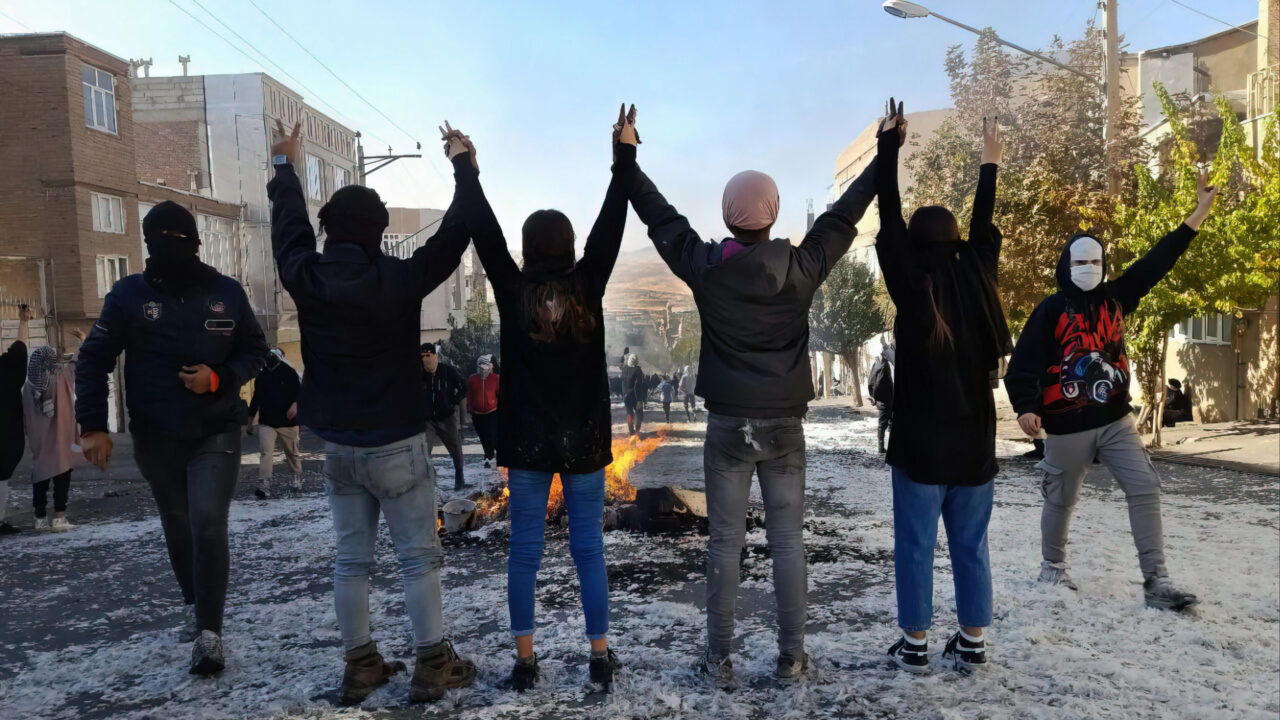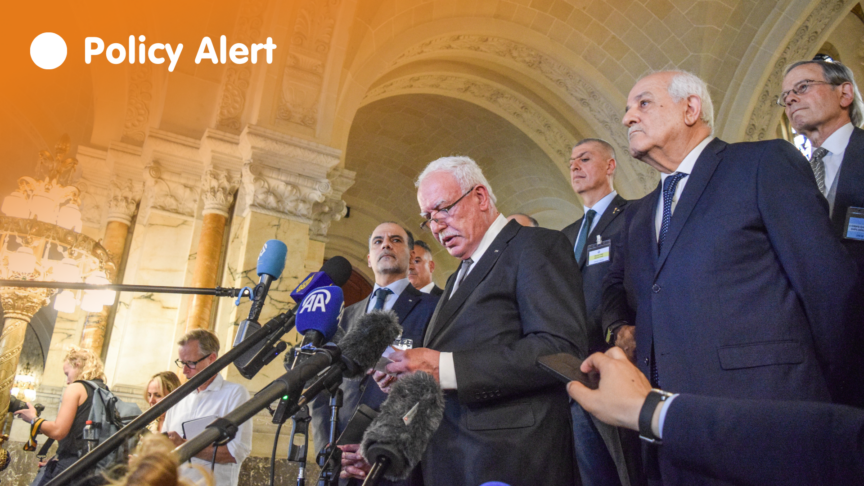Three ways European governments can support Iranian protesters
The protest movement sweeping Iran is an Iranian-led struggle. But European governments can play their part by focusing on measures that help protect protesters
After four months of nationwide protests sparked by the death of a 22-year-old woman, Mahsa Jhina Amini, Iran has dialled up its repressive response to the unrest, recently executing two protesters after sham trials. On Monday, the 27 EU member states jointly condemned Iran’s actions in what is the most strongly worded EU statement on Iran in recent years. The European Union has also been quick to adopt a series of sanctions packages targeting individuals and entities responsible for the crackdown. The German foreign minister has stressed that there can be no “business as usual” with Iran. But beyond sanctions and statements, what should Europeans do now?
This women-led protest movement is demanding far-reaching change – with chants calling for the downfall of the Islamic Republic of Iran, and “death to the dictator” in reference to the supreme leader Ali Khamenei. Week after week, protesters have gathered in defiance of mass arrests, a growing death toll, and deepening repression. Human rights organisations have reported over 480 deaths, including 68 children, with over 18,000 estimated arrests.
So far, these protests have remained largely organic and leaderless. They have not yet mushroomed into the large crowds that gathered during the 2009 month-long Green Movement protests, nor have they mobilised the support of key constituencies such as the security sector. While there has been an uptick in strikes, the protests have still to trigger sustained general strikes in key sectors of the economy in ways that pose an existential challenge to the regime. But while bringing about the collapse of the Islamic Republic will still take considerable effort, it is clear that revolutionary sentiment simmers throughout Iran’s streets, and the youth movement rallying these protests is not going away. The regularity and breadth of the protests, and the unprecedented nature of their demands, clearly pose a direct challenge to the legitimacy of the current order. The government can be expected to escalate its use of repressive force.
This is going to be a long-term struggle, owned by Iranians on the ground, and Europeans need to remain humble about their role and capacity to shape change.
For Europeans there is a clear desire to do more to support the protesters. The right to free association and to protest is at the heart of European values, and the use of repressive force deserves outright condemnation. Iran has also long been a highly problematic actor on the global scene, feeding regional conflict and nuclear proliferation – and recently offering military support to Russia that has caused further devastation in Ukraine. In light of the executions, European states are now focused on the need for Tehran to end its campaign of domestic repression – and how they can help.
As a first step, European governments need to acknowledge that this is an Iranian-led movement and that change can only come from within. This is going to be a long-term struggle, owned by Iranians on the ground, and Europeans need to remain humble about their role and capacity to shape change. A heavy or interventionist external hand risks feeding the government’s narrative that this is a foreign plot, which may further accelerate its repressive turn. In this context, the EU’s immediate focus should be on measures that help protect protesters. Here it can step up support in three main ways: exposure, escape, and support for Iranian-led civil society initiatives.
Exposure
Firstly, European countries should shine a strong light on violations and work to mobilise international actors beyond the Western alliance to place pressure on Iran. In November, European governments rallied the UN Human Rights Council to vote overwhelmingly in support of a fact-finding investigation into recent human rights abuses in Iran. At this critical moment, when it appears that Tehran is trying to place a blanket of fear over the country, efforts need to focus on halting further executions of protesters. Here, the ability of Europe and the United States to influence Iran alone is limited. They should therefore work with Iran’s Muslim-majority neighbours and Tehran’s partners in the global south to use all available diplomatic channels and pressure to prevent further executions. Clearly the regime is focused on its own survival rather than its international reputation, but there may be moments when it steps back due to the risk of widespread international condemnation – and Europeans should ensure that Tehran has nowhere to hide. Part of the aim here should be to buy time for activists inside the country so that they can increase the pressure on Iran’s judiciary to halt the enforcement of the death penalty.
Escape
Secondly, European governments should offer legal pathways for those who need to escape Iran, including rapid access to visas and asylum. This points to the need to maintain some form of diplomatic presence on the ground. Not only will this allow European governments to better understand what is actually happening – analysis that is central to an effective response to the situation – it will also enable them to respond to the growing number of detentions of European nationals and to rapidly process visa applications for those most in need. This should be complemented by EU outreach to Iran’s immediate neighbours to ensure that border crossings remain open to activists fleeing Iran, and that they can safely apply for asylum in Europe from these countries. If Europeans are truly invested in supporting Iranians, they need to be prepared to offer them refuge.
Support for Iranian-led initiatives
Finally, European governments should carefully find ways to provide technical and capacity support to those helping Iranian civil society. They will need to channel this via credible organisations outside Iran, but should ensure Iranian ownership of these activities. European governments should identify legitimate partners who can support initiatives that aim to protect protesters on the ground. These efforts should include intensified outreach with actors in the technology sector to push for broader lines of support such as maintaining internet access as the Iranian government works to shut down channels of communication.
Europeans need to be strongly guided by a ‘do no harm’ approach. A clear example is carrying out comprehensive harm analyses before implementing wider sanctions to ensure these do not harm the Iranian population rather than the regime. European governments also need to be careful to not over-promise in a manner that feeds protesters’ expectations of, and future disappointment with, external support. But if Europeans tread carefully they can demonstrate important solidarity with Iranian protesters and take some steps to help protect them from intensifying state repression so that they have the space to try and shape their own future.
The European Council on Foreign Relations does not take collective positions. ECFR publications only represent the views of their individual authors.



